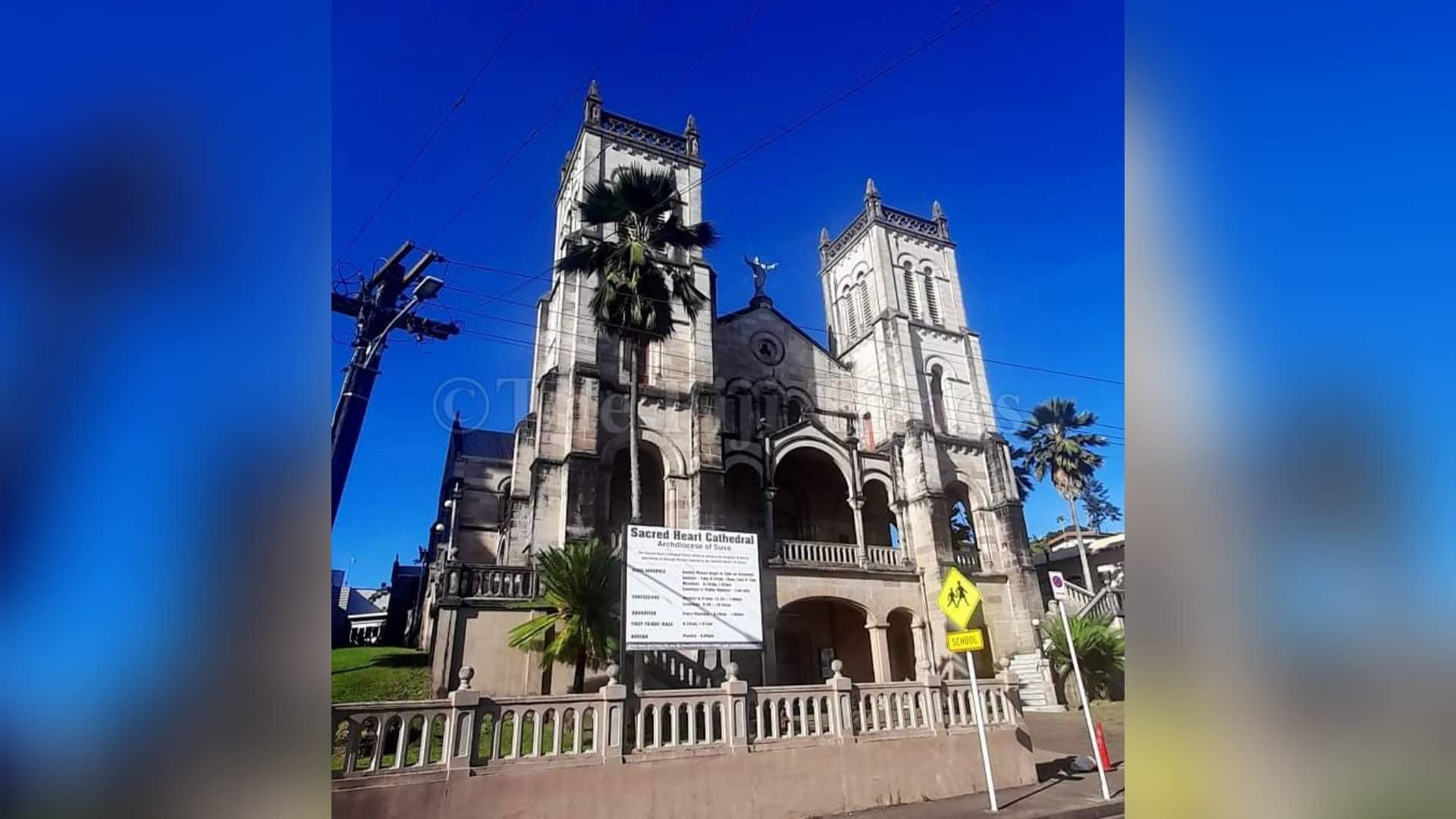In the heart of Suva City, located along Pratt St, stands the beautifully structured Sacred Heart Cathedral.
Known to be the headquarters of the Catholic Archdiocese of Suva, the grand European design includes sandstone blocks imported from Australia, concrete staircases, balustrades, and two towers.
The capital is moved to Suva: Church of St Paul – 1885
When Fr Bréhéret prepared his annual report for 1879, the government had still not made any decision on whether the capital should be moved from Levuka to the deepwater port of Suva on the southeast of the main island.
He thought Levuka was more central than Suva.
However, that changed when Suva began growing as a commercial centre and Europeans were being attracted by the opportunities that were offered. The timeline of the cathedral began in 1885 when the first Roman Catholic Church was just a small wooden chapel of St Paul in Toorak Rd.
Fr Chaix was sent to serve the 100 or so Europeans and the numerous Solomon Islanders and New Hebrideans living in the new capital. St Paul’s was the first Christian church to be built in Suva and it could be seen from the bay by ships entering the port.
Cathedral
The construction of the cathedral in Suva was the most important of all the Bishop’s enterprises.
The Rev Dr Julien Vidal was the first Roman Catholic Bishop to Fiji in 1888.
He purchased the site for the cathedral in Suva and engaged Fr Anselme Rosier from New Caledonia to begin designs for the Cathedral using local stone.
Attempts were made to get permission to extract stone from Labiko Island but after many difficulties, it was abandoned and a quarry was bought at Walu Bay.
Unfortunately, the stone proved unsuitable and in any case, there were no skilled masons to prepare the blocks. In 1892 the crypt was excavated for laying the foundations.
Two years later, in 1894, after work on the site in an expenditure of £350 ($F940) on land, equipment, lime and boats, little was achieved and work was suspended.
Bishop Vidal visited Sydney and decided to import sandstone blocks from the Pyrmont quarries. On July 22, the foundation stone was laid by Archbishop Redwood of Wellington.
By 1896, the crypt was completed.
Fr Rosier and his New Caledonian stone masons returned to their country, leaving behind the inexperienced workforce to continue on their own.
Problems escalated with an increase in freight costs for the stones. While in Europe, Bishop Vidal met a young architect, Pierre Bourdier.
He was encouraged by the Bishop to accompany him to Suva as Br Bourdier.
He arrived in 1897 and immediately took over the supervision of building the Cathedral.
However, a bubonic plague outbreak happened in Sydney in 1900, which resulted in severe quarantine regulations imposed on Fiji for over six months. In addition to this, imports of heavy stone were ultimately suspended and Australian stonemasons were laid off.
August 1901, the statue of Christ was raised above the front gable and the ornamentation of the façade was underway.
A year later (1902), the main structure was completed, but because of financial limitations, the construction of the towers were postponed.
However, on July 20 of the same year, the building was blessed and used for the first time.
The Vicar Apostolic of Fiji during the time was the Rev Dr Julien Vidal. Fr Bourdier later undertook studies for priesthood and was ordained in 1906 at the age of 50.
As the years went by, the construction of the two towers commenced from 1934 to 1935, and the fundraising by the congregation began.
In 1937, Fr Bourdier died at the age of 80 while still working on the plans for the Cathedral towers.
Two years later (1939), the two towers and a flight of concrete steps curving around the southwest corner to match the opposite side were completed.
By 1993, construction of the sanctuary and major upgrading undertaken to the Cathedral by the Archbishop of Suva, the Rev Petero Mataca began.
The principal architect of Jaimi Associates won the Fiji Association of Architects Award for refurbishments.
Finally completed in 1994, the cathedral commemorated the 150 anniversary of the Marist Mission in Fiji on August 15.
The cathedral was dedicated by His Eminence Jozef Cardinal Tomko special envoy of Pope John Paul II.
Twenty years later (2014), Archbishop Emeritus Petero Mataca was laid to rest and entombed in the crypt.
- Source: Voyage of Faith: The story of the first 100 years of Catholic missionary endeavour in Fiji and Rotuma written by Margaret Knox


